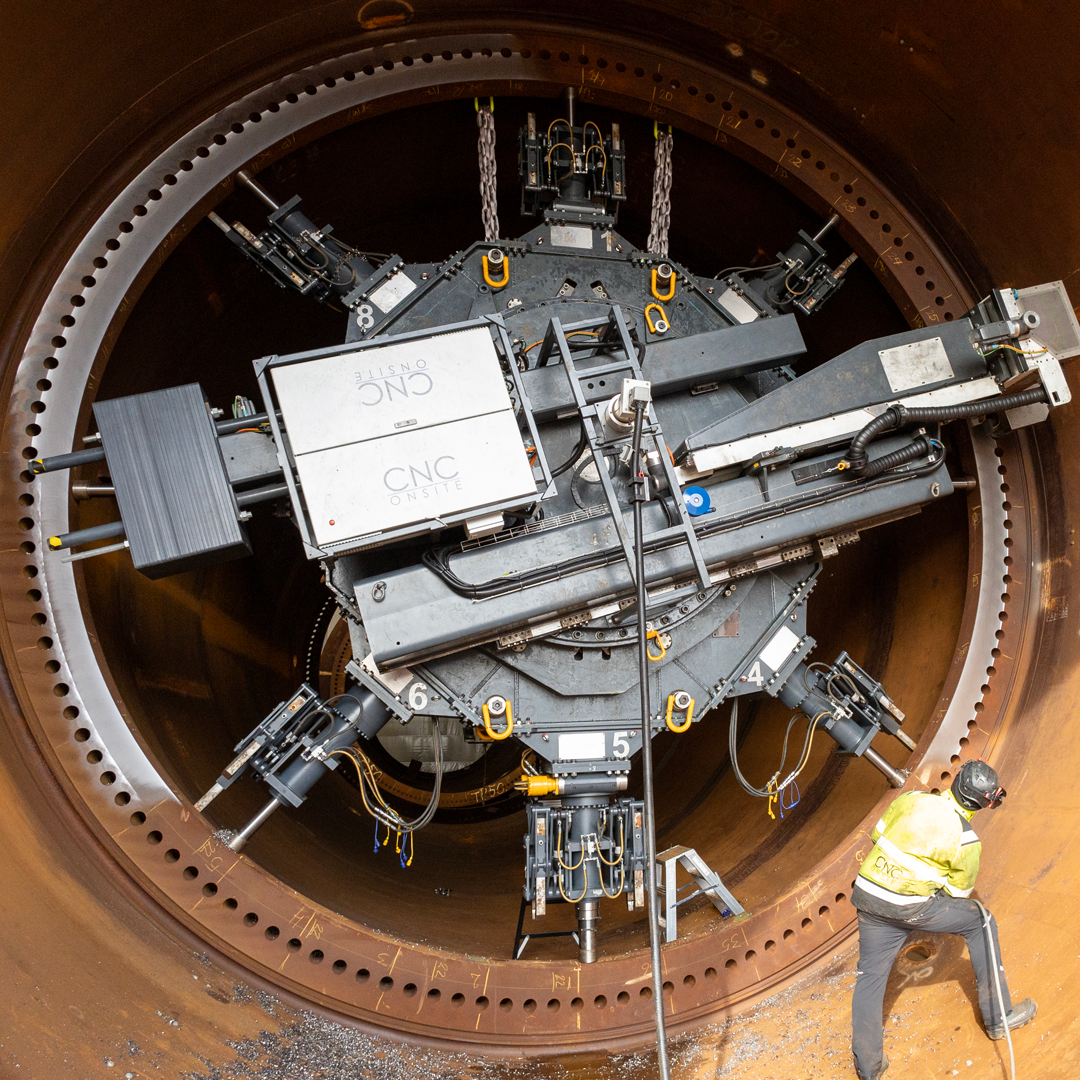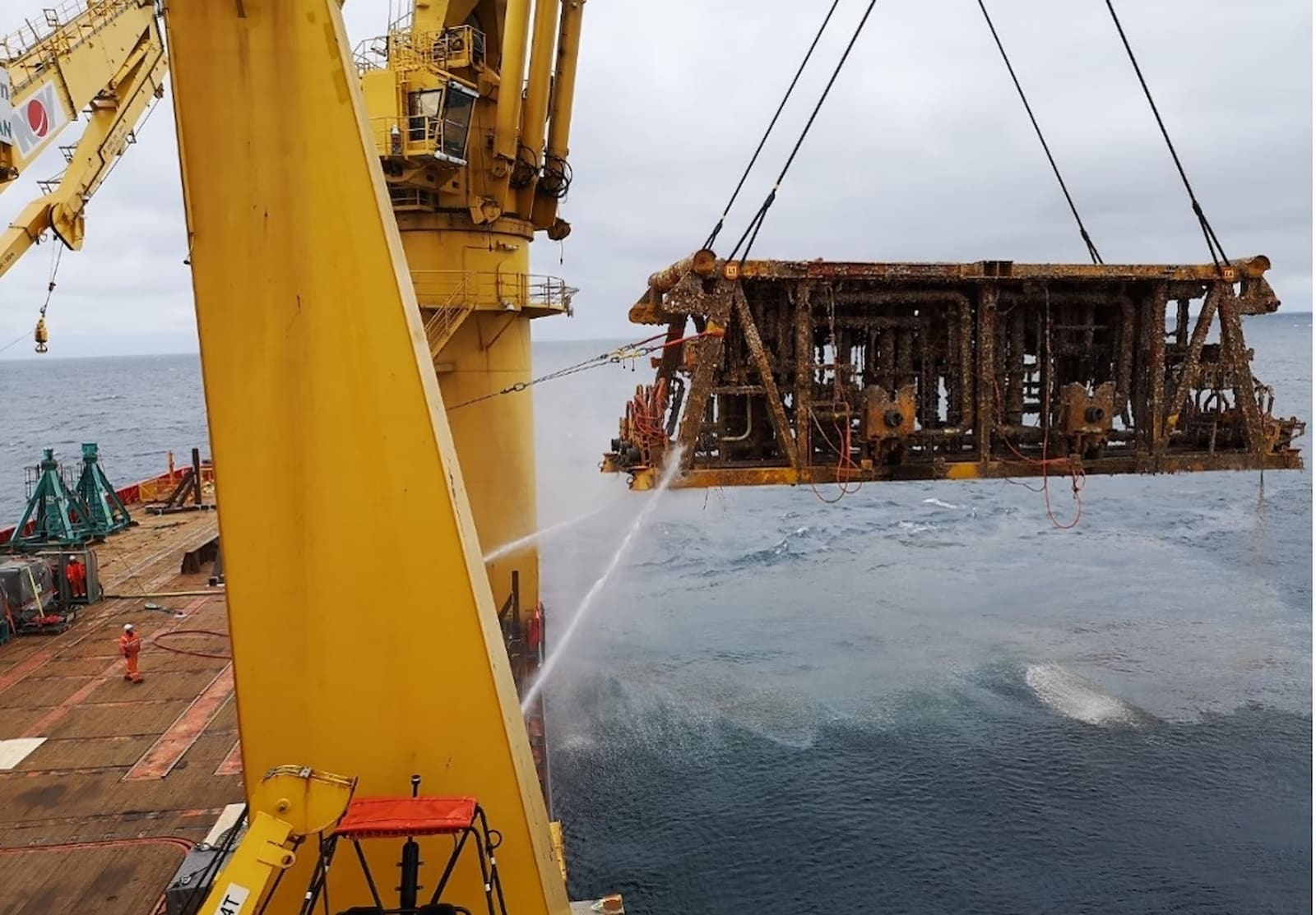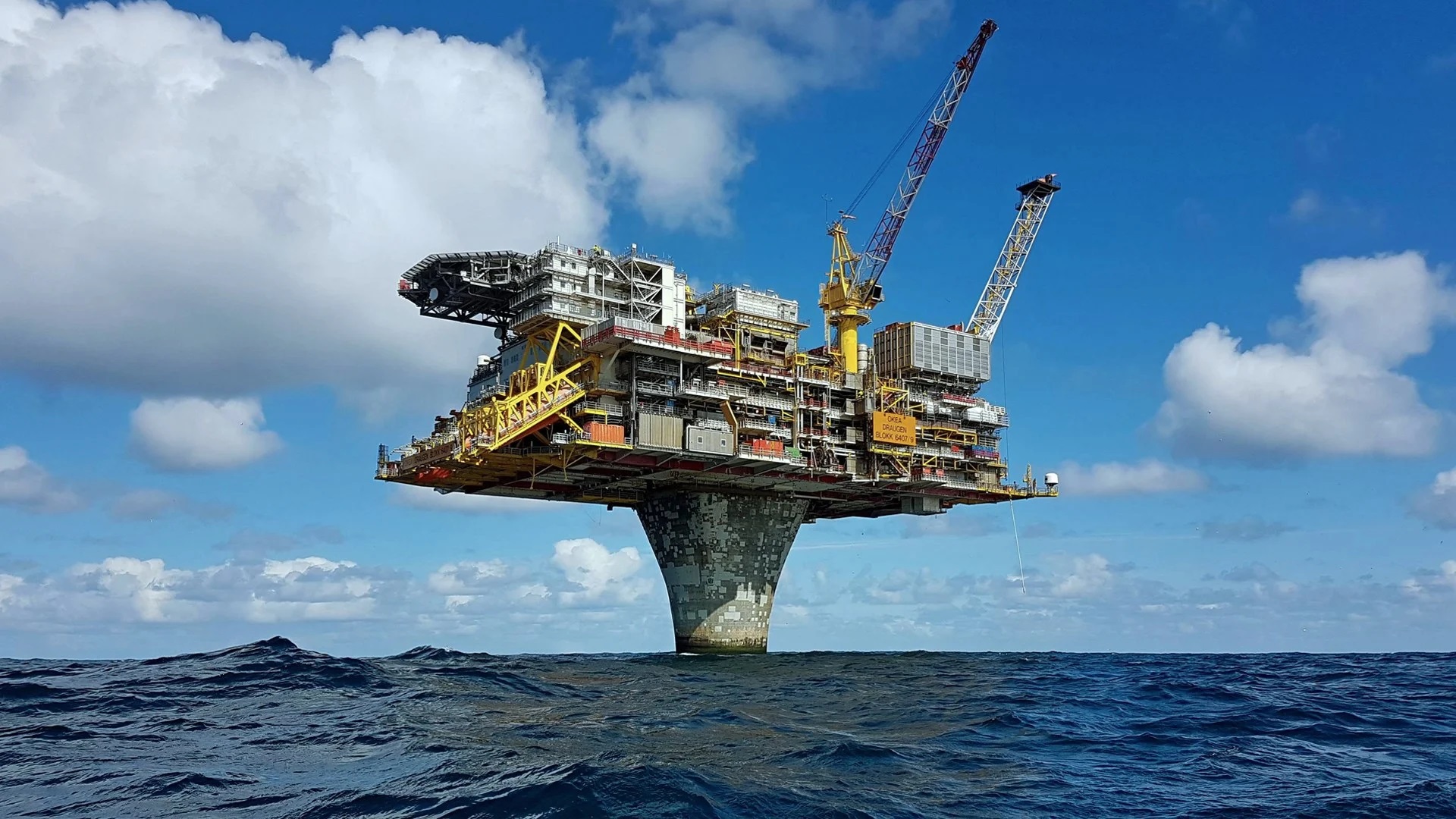- CS WIND Offshore integrates solution for monopile and transition piece flanges
- Precise tolerance of 1 millimeter, meeting requirements for large flanges
- Flange-facing precision machine reduces maintenance costs and improves reliability and service life
- CNC Onsite presents at WindEnergy Hamburg, 24-27 September
VEJLE, Denmark, 23 September, 2024 – Meeting stringent tolerances of ever larger offshore flanges for monopiles and transition pieces, the flange facing solution from CNC Onsite, a Danish mobile machining specialist, offers consistent and fine tolerances. The process continues to ensure an optimal contact surface in flange connections for CS WIND Offshore’s customers, achieving a one millimeter global flatness tolerance, The precision milling process, developed by CNC Onsite, contributes to lower maintenance costs as well as improved reliability and service life.
Two years ago, CS WIND Offshore, a leading supplier of offshore wind turbine foundations, contracted CNC Onsite to build the precision machine for milling of the large diameter flanges of, monopiles and transition pieces that are manufactured at its facility in Aalborg, Denmark.
“The fine tolerances of one millimeter that our precision flange milling machine is achieving at CS WIND Offshore’s production line together with the resulting feedback from CS WIND Offshore demonstrate that the end customer can achieve a near-perfect contact surface in large bolted flange connections,“ says Søren Kellenberger, Sales Director, CNC Onsite.
Developed and built at CNC Onsite’s Headquarters in Velje, Denmark, the precision machine called “Goliath” is employed to mill flanges after the welding process.
”CNC Onsite’s machine has been integrated into the manufacturing process of the large diameter, transition piece flanges. This step supports the integrity of these flanges. We have been impressed that the tolerances have been even better than specified,” says Ole Springby, Manager, Measurement & Handover, CS WIND Offshore.
Producing transition pieces at its 450,000 square meter facility in Aalborg, CS WIND Offshore ships the large diameter flanges to offshore wind farms around the world.
“Obtaining a global flatness of a couple of millimeters on a four meter diameter flange can be challenging enough, but obtaining the same result on today’s eight-plus meter flanges is simply not possible with previous methods,” explains Kellenberger.
A critical mechanical joint within the wind turbine structure, large flanges in particular are technically complex to mount. The pair of surfaces must match precisely to fix reliably in place. Wind turbine flanges using bolted connections must be flat to within one or two millimeters to achieve structural strength, fatigue resistance and sustain correct bolt tightening during operation.
As loose bolts can be associated with significant repair costs and downtime, precise flange connections for large diameter wind turbines will become more important in the future. Achieving the best possible fit between the wind turbine tower flange and its base during the manufacturing process reduces the requirement for routine retightening and associated downtime, also potentially leading to longer wind turbine service life.
“If after the manufacturer has welded the flange into the structure, the flange surface presents with skewness – and we are only talking 1-2 millimeters – CNC Onsite’s machine will mill the flanges to restore the optimal structural fit,” says Kellenberger.
With global flatness tolerances of one millimeter and local flatness tolerances of 0.3 millimeter for an 8-meter flange, the Goliath machine exceeds the industry’s tolerances, offshore and onshore, and opens new possibilities for design engineers.
CNC Onsite applied its 10 years of experience in machining flanges for the onshore and offshore wind turbine industry to develop Goliath.
At WindEnergy Hamburg, 24-27 September, in Hall B1.EG, stand 508, CNC Onsite will demonstrate its flange facing capability.

About CNC Onsite
Headquartered in Vejle in Denmark, CNC Onsite designs, builds and delivers high precision mobile machining for wind turbines including offshore foundations. The machines can be built to perform a range of tasks. CNC Onsite serves the onshore and offshore wind energy sector delivering as standard solutions: machining of large diameter steel flanges and blade root ends; specialized repair services covering yaw ring, inserts in blade root, rotor lock, generator shaft, bearing housing and threaded holes. Removal and replacement of worn and broken bolts round off the offering.
About CS WIND Offshore
In December 2023 South Korea-based CS WIND completed the acquisition of Bladt Industries, now renamed CS WIND Offshore to underline the expertise in delivering transition pieces, foundations, and substations for offshore wind farms. With the industry’s most extensive track record and more than 20 years of experience, our 1,600 employees in Denmark carry on the legacy of being the foundation for the green energy transition – now supported by the global CS WIND family.
Media contact for CNC Onsite:
Dr. Malene Conlong
Moller International (for CNC Onsite)
Tel: +49 171 699 2650
Email: M.conlong@mollerint.dk
Note to editors
The diameter of the monopiles, transition pieces and towers has nearly doubled over the past 10 to 15 years, but the absolute tolerances required in their manufacture remain unchanged.
Bolted flange connections, as opposed to grouted joints, which are costly to repair, are increasingly the preferred connection method for offshore foundations. Monopiles constitute an overwhelming majority of foundation types used in the current offshore wind market.


